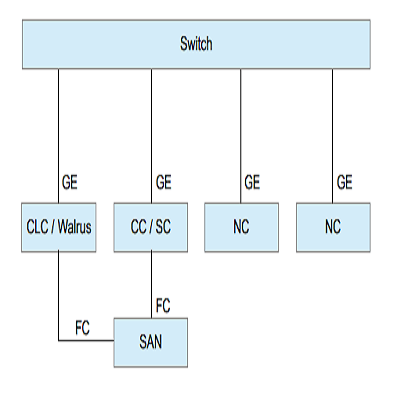
Virtual machines and virtualized hardware have been around for over half a century. The commoditization of the x86 platform and its rapidly growing hardware capabilities have led to recent exponential growth in the use of virtualization both in the enterprise and high performance computing (HPC). The startup time of a virtualized environment is a key performance metric for high performance computing in which the runtime of any individual task is typically much shorter than the lifetime of a virtualized service in an enterprise context. In this paper, a methodology for accurately measuring the startup performance on an HPC system is described. The startup performance overhead of three of the most mature, widely deployed cloud management frameworks (OpenStack, OpenNebula, and Eucalyptus) is measured to determine their suitability for workloads typically seen in an HPC environment. A 10x performance difference is observed between the fastest (Eucalyptus) and the slowest (OpenNebula) framework. This time difference is primarily due to delays in waiting on networking in the cloud-init portion of the startup. The methodology and measurements presented should facilitate the optimization of startup across a variety of virtualization environments.
翻译:半个多世纪以来,虚拟机器和虚拟硬件已经存在了半个多世纪。x86平台的商品化及其迅速增长的硬件能力导致企业和高性能计算(HPC)中虚拟化使用量的指数性增长。虚拟化环境的启动时间是高性能计算的关键性能衡量标准,在高性能计算中,任何单项任务的运行时间通常比企业范围内虚拟化服务的寿命期要短得多。在本文中,准确测量高PC系统启动性能的方法被描述为。三个最成熟、最广泛部署的云管理框架(OpenStack、OpenNebula和Eucalyptus)的启动性能管理间接费用被测量,以确定它们是否适合高性能计算环境中通常看到的工作量。观察到一个10x的性能差异是最快的(Eucalyptus)和最慢的(OpenNebula)框架之间的性能差异。这一时间差异主要是由于在启动的云性能部分等待网络的延迟。提出的方法和测量结果应有助于在各种虚拟化环境中优化启动。



